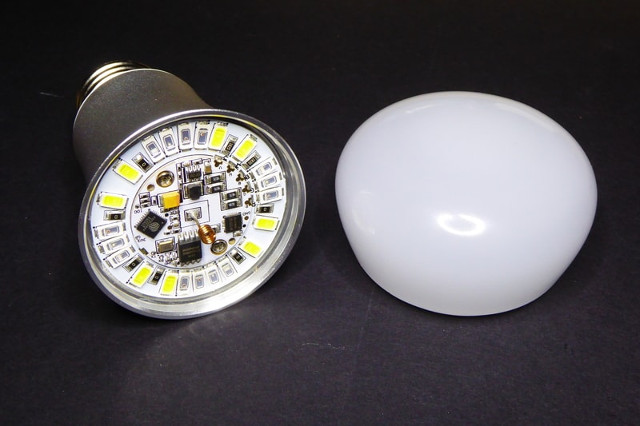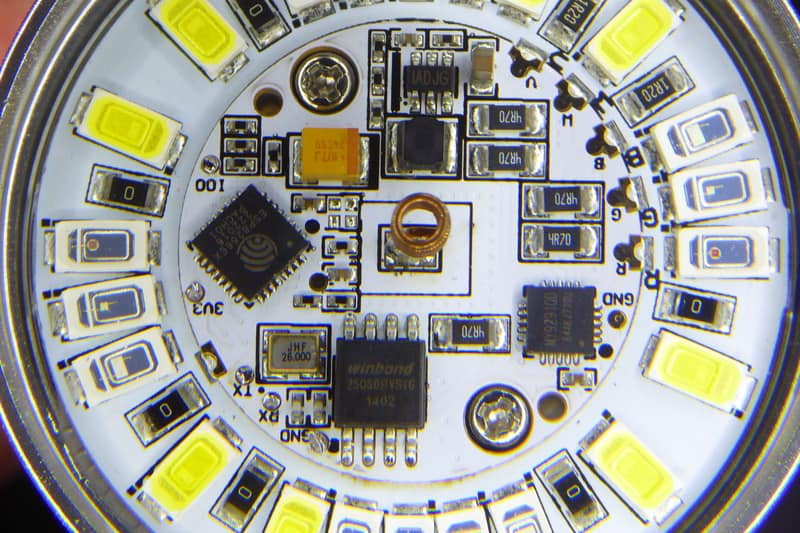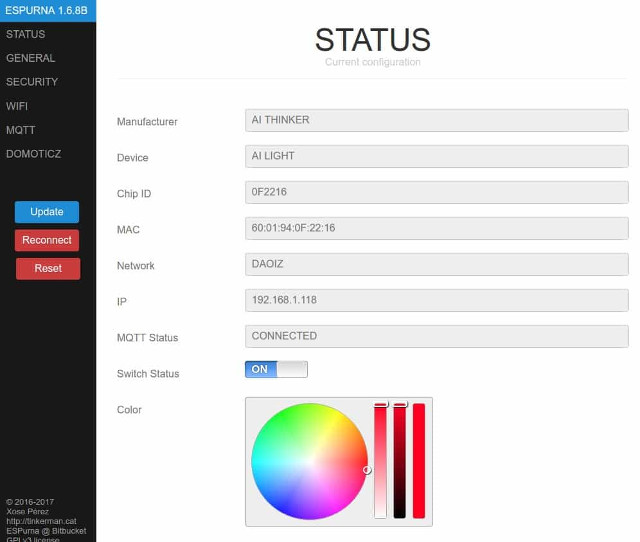AI-Thinker is famous in the maker world for their ESP8266 modules, but they’ve also recently launched a WiFi RGB light bulb that sells for about $12.5 and up on eBay and Aliexpress. Some people noticed, and bought samples online, including Xose Pérez (aka Tinkerman), ESPurna open-source firmware developer, who could confirm ESP8266 was used in the light bulb, did some investigations, and eventually added the light bulb into ESPurna, which means it can be managed using MQTT or a web interface.
AI Light looks very similar to Philips Hue, but comes with WiFi instead of Zigbee. AI Light “M1636” key features:
- RGBW LED E27 bulb with 16.7M colors
- Connectivity – 802.11 b/g/n WiFi
- Encryption – AES
- Voltage Range – 110-240V
- LED Power – 5 watts
- WiFi Power Consumption – ≤0.3W
- Temperature Range – -5~45degree
- Humidity – ≤80%
- Certifications – FCC, CE, ROHS
If you’re going to use the stock firmware, you can control the LED with Tuyasmart Android app. You’ll find the user’s manual and more photos on the FCC page for the light bulb. But there are already plenty of Wifi light bulbs on the market, and what makes this light bulb interesting is that it’s based on ESP8266, and you can have full control over it using open source firmware.
The bulb cap is allegedly very easy to pop out, as it’s not glued to the board. A close up on the board itself reveals it’s indeed powered by Espressif ESP8266EX WiSoC connected to a 1MB Winbond 25Q80BVSIG flash, and MY-Semi MY9291QD LED driver.
A close up on the board itself reveals it’s indeed powered by Espressif ESP8266EX WiSoC connected to a 1MB Winbond 25Q80BVSIG flash, and MY-Semi MY9291QD LED driver.

If you look from the bottom left to middle left of the inner circle, you’ll see 3V3, GND, RX, TX and IOO pads, which we can use after soldering some wires, and connect a USB to TTL board in order to flash the firmware. Note that IOO must be connected the GND to enter flash mode, you can remove the wire after flashing, in order to check the serial output during a normal boot.
After further investigation, Xose found out that there’s already some software implementation for MY9291 driver in Noduino OpenLight project, made by the developers who designed Noduino ESP8266/ ESP32 boards, and are likely the developers of AI Light. All needed source code can be found in Noduino-SDK released under a GPLv3 license, and includes a driver written in C language for MY9291 LED driver chip. Xose wrote a wrapper to make the driver work with Arduino ESP8266, and released the code on Github.
The code sample below shows how to set the LEDs to RED color at 100% duty cycle:
|
1 2 3 4 5 6 7 8 9 10 11 12 13 14 15 16 17 |
#include <my9291.h> #define MY9291_DI_PIN 13 #define MY9291_DCKI_PIN 15 my9291 _my9291 = my9291( MY9291_DI_PIN, MY9291_DCKI_PIN, MY9291_COMMAND_DEFAULT ); void setup() { _my9291.setColor((my9291_color_t) { 255, 0, 0, 0 }); _my9291.setState(true); } void loop() {} |
Ai-Thinker Ai Light / Noduino OpenLight have now been added to ESPurna 1.6.8 firmware, and you can turn the light on and off, select the color from the web interface, and/or control it via MQTT.


Jean-Luc started CNX Software in 2010 as a part-time endeavor, before quitting his job as a software engineering manager, and starting to write daily news, and reviews full time later in 2011.
Support CNX Software! Donate via cryptocurrencies, become a Patron on Patreon, or purchase goods on Amazon or Aliexpress





